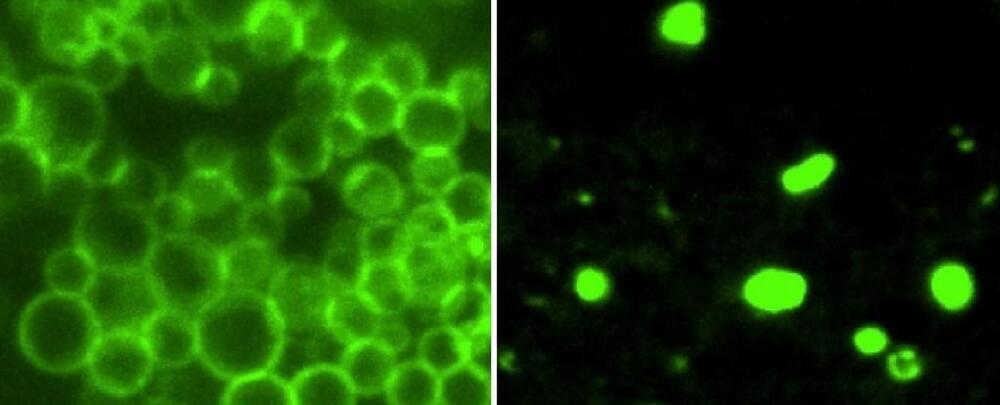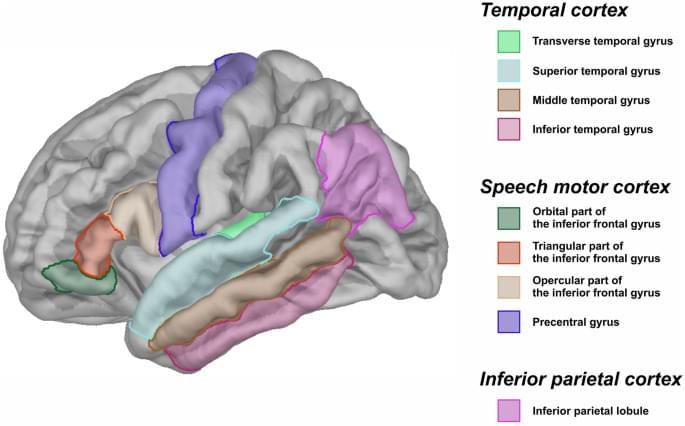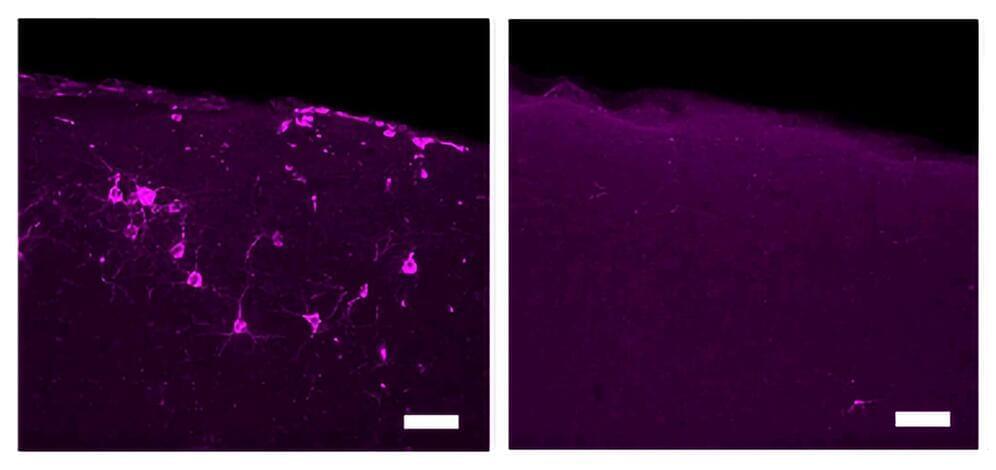A new protein discovery may have highlighted a ‘switch’ in brain cells that slows down inflammation and aging.



Lifespan by simply slowing the aging of an organ, such as the intestine? CNRS researchers have discovered how to extend the life expectancy of zebrafish by reactivating a gene within intestinal cells. The results were published in the journal Nature Aging on May 4, 2023.
The intestine plays a crucial role in an anti-aging approach as well as general health. Over a century ago, Elie Metchnikov observed that aging ensued from increased inflammation of the intestine and microbial infiltration within blood circulation. The more we age, the less the digestive tract serves as a barrier, allowing the undesirable particles and bacteria that cause the more rapid aging of the organism to pass through.
In a new study, Miguel Godinho Ferreira and his team at the Institute for Research on Cancer and Aging (Ircan) in Nice (CNRS/Inserm/Université Côte d’Azur) have studied the impact on aging of telomere length in the intestinal cells of zebrafish. As with humans, these chromosome extremities shrink faster in the intestine than in other organs during the course of a life, which is why this process plays such an important role in aging.

Join us at 6:00 pm EST (11:00 pm UTC) for our Perpetual Life Hybrid Party live from our new location at 950 South Cypress Road in Pompano Beach, FL, & socialize with Immortalists from Around the World, hosted by hosted by Tonya Scholz & Rudi Hoffman.
Stay “In Zoom” for our 7:00 pm (12:00 am-midnight UTC) YouTube Streaming Service. This month, we are excited to have two speakers. First, Erik Nelson, Director of Clinical Programs at The Healthy Longevity Clinic, will present “Into the World of Longevity Medicine.”
Second, Bill Faloon: A founder of The Church of Perpetual Life and a leader in the Global Age Reversal movement, Bill will give a NEW Age Reversal Update at this service.

The Mediterranean diet has become famous far beyond its namesake sea, as research increasingly supports its longstanding reputation for boosting health and longevity.
Studies have shown that people on the Mediterranean diet – which emphasizes plant-based foods and fish, and not so much red meat or dairy – tend to be healthier in multiple ways, with lower rates of heart disease, cancer, diabetes, dementia, and overall mortality.
But why? Despite strong evidence for health benefits, it remains unclear how exactly this mix of foods, at the cellular level, can lengthen lifespan.

In a conversation during an episode of the Adam Buxton podcast, the veteran performer recently voiced his opinion regarding the likelihood of actors being kept alive in movies through the power of advanced technologies.
Known for his iconic roles in numerous blockbuster films like Forest Gump and Cast Away, the actor said that such technologies can be leveraged to recreate his image, voice, and mannerisms, from “now until kingdom come,” said Tom in the podcast.
Aubrey: 50% chance to LEV in 12–15 years, and a variety of topics from Rey Kurzweil to A.I. to Singularity, and so on.
In this podcast, Aubrey de Grey discusses his work as President and CSO at Lev Foundation and co-founder at Sense Research Foundation in the field of longevity. He explains how the Foundation’s focus is to combine rejuvenation and damage repair interventions to have greater efficacy in postponing aging and saving lives. De Grey believes that within 12 to 15 years, they have a 50% chance of achieving longevity escape velocity, which is postponing aging and rejuvenating the body faster than time passes. De Grey acknowledges the limitations of traditional approaches like exercise and diet in postponing aging and feels that future breakthroughs will come from high-tech approaches like skin and cell therapies. He discusses the potential of AI and machine learning in drug discovery and the possibility of using it to accelerate scientific experimentation to optimize decisions about which experiments to do next. De Gray cautions that the quality of conclusions from AI depends on the quality and quantity of input data and that the path towards defeating aging would require a symbiotic partnership between humans and AI. Finally, he discusses his excitement about the possibilities of hardware and devices like Apple Watch and Levels in tracking blood sugar levels and their potential to prolong life.

Language impairment is comorbid in most children with Autism Spectrum Disorder (ASD) but its neural basis is poorly understood. Using structural magnetic resonance imaging (MRI), the present study provides the whole-brain comparison of both volume-and surface-based characteristics between groups of children with and without ASD and investigates the relationships between these characteristics in language-related areas and the language abilities of children with ASD measured with standardized tools. A total of 36 school-aged children participated in the study: 18 children with ASD and 18 age-and sex-matched typically developing controls. The results revealed that multiple regions differed between groups of children in gray matter volume, gray matter thickness, gyrification, and cortical complexity (fractal dimension).

Researchers at the University of Cologne have discovered a protein complex, called DREAM, that inhibits DNA repair mechanisms in human, mouse, and nematode cells, thereby contributing to aging and disease. They successfully suppressed the DREAM complex with a pharmaceutical agent, boosting the cells’ resilience to DNA damage, and suggesting potential new treatments for aging and cancer, although further research is needed.
Researchers at the University of Cologne have found that a protein complex impedes the repair of genomic damage in human cells, mice, and the nematode Caenorhabditis elegans. Furthermore, they were able to successfully obstruct this complex with a pharmaceutical agent for the first time.
When we suppress the so-called DREAM complex in body cells, various repair mechanisms kick in, making these cells extremely resilient towards all kinds of DNA.

Evidence that non-invasive sensory stimulation of 40 Hz gamma frequency brain rhythms can reduce Alzheimer’s disease pathology and symptoms, already shown with light and sound by multiple research groups in mice and humans, now extends to tactile stimulation. A new study by MIT scientists shows that Alzheimer’s model mice exposed to 40 Hz vibration an hour a day for several weeks showed improved brain health and motor function compared to untreated controls.
The MIT group is not the first to show that gamma frequency tactile stimulation can affect brain activity and improve motor function, but they are the first to show that the stimulation can also reduce levels of the hallmark Alzheimer’s protein phosphorylated tau, keep neurons from dying or losing their synapse circuit connections, and reduce neural DNA damage.
“This work demonstrates a third sensory modality that we can use to increase gamma power in the brain,” said Li-Huei Tsai, corresponding author of the study, director of The Picower Institute for Learning and Memory and the Aging Brain Initiative at MIT, and Picower Professor in the Department of Brain and Cognitive Sciences (BCS).

Dr. Sylvain Moreno is chief executive officer and scientific director of Circle Innovation.
Artificial intelligence (AI) holds great promise in the fight against ageism, and future technologies powered by AI can be a first step to ensure older adults are fully involved in the processes, systems and, ultimately, services that will affect them throughout the aging journey.
Healthcare providers, governments, academia, not-for-profits and businesses can ensure that AI is not only strengthening healthcare for older adults but also empowering them to meet their individual needs.